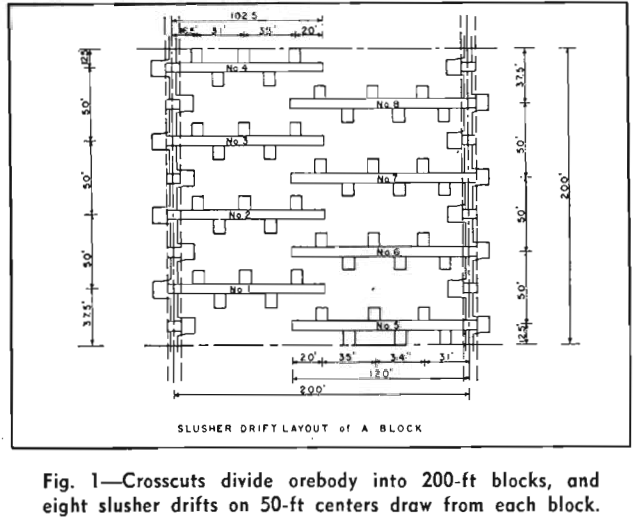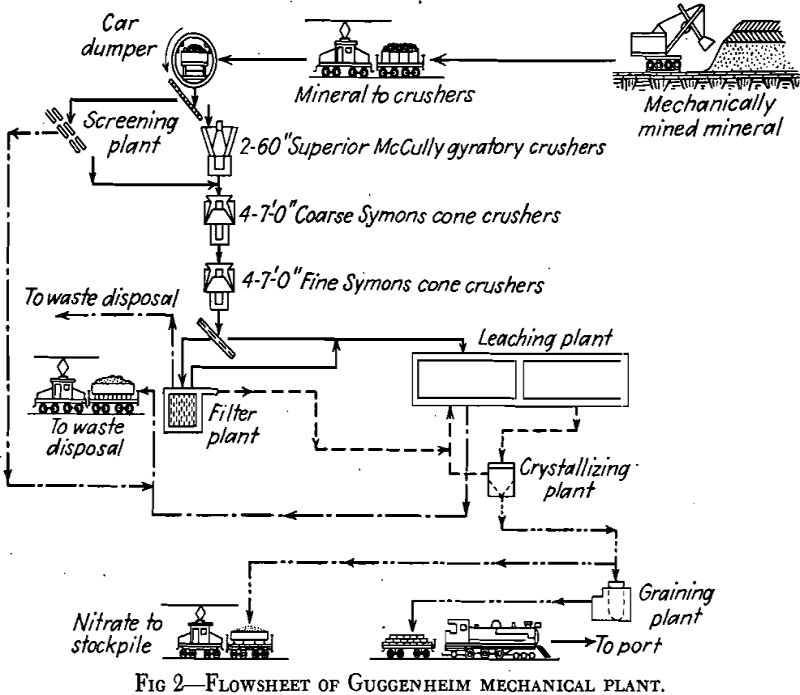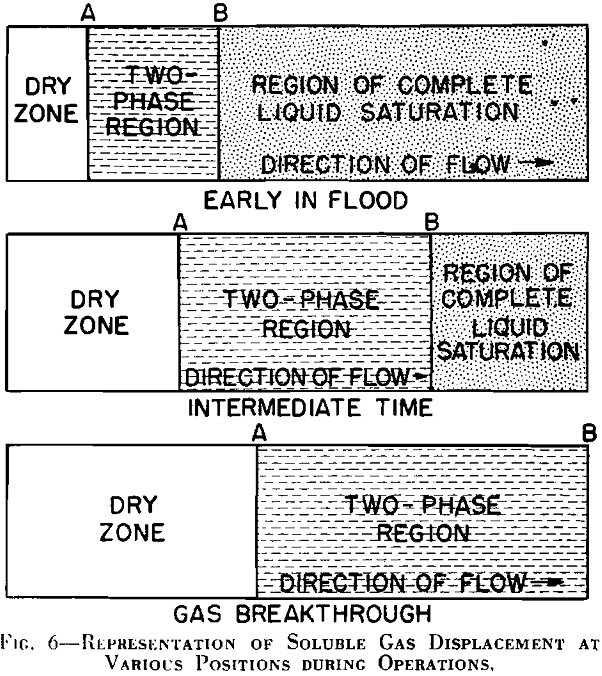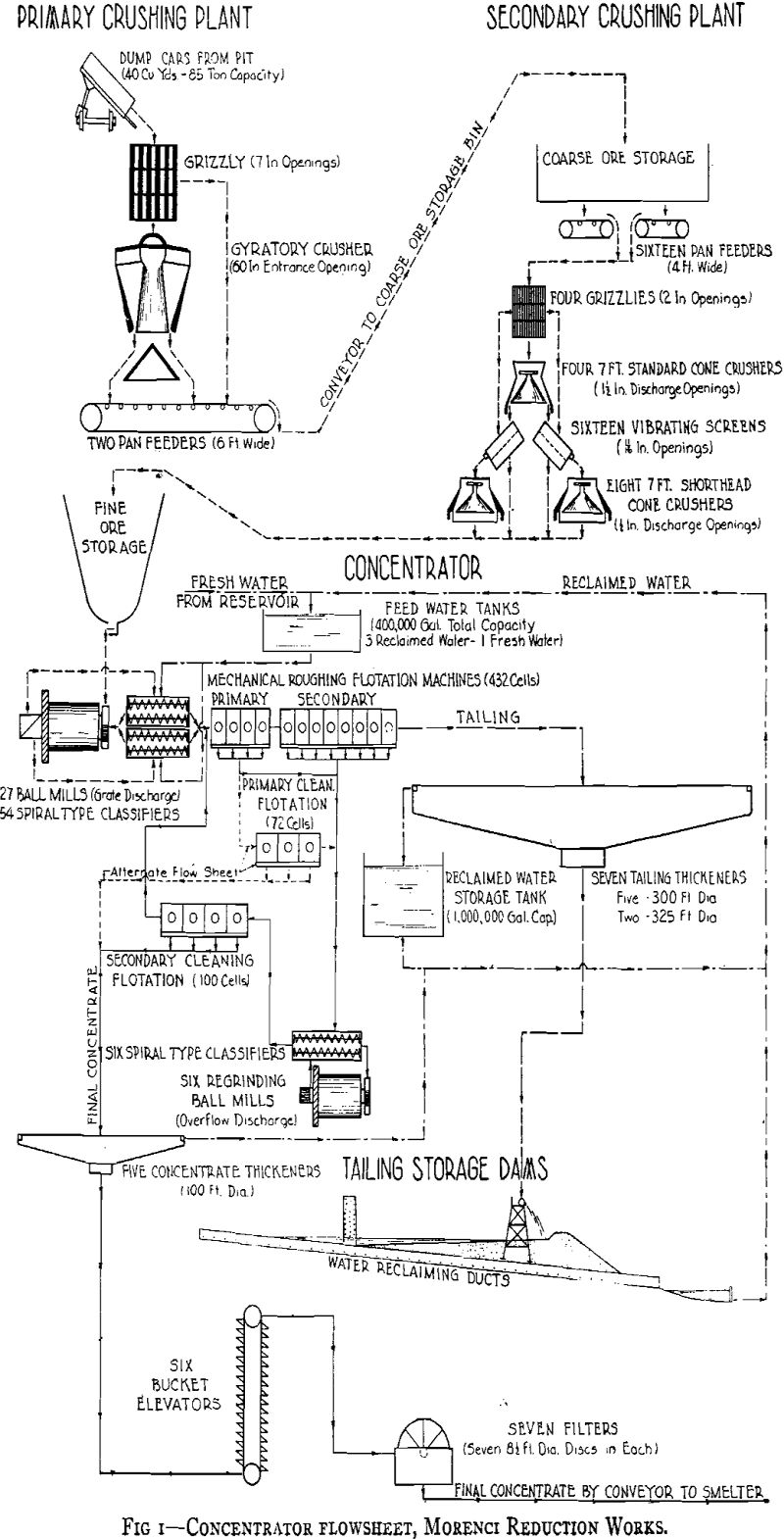Block Caving Mining Method

Block Caving has been developed to a high degree of efficiency in the last two decades and more particularly since World War II. At the Jeffrey mine of Canadian Johns-Manville Co., in the Eastern Townships of Quebec, several innovations have increased production and decreased costs. Asbestos ore is produced at the rate of 10,000 tpd […]
Nitrates and Nitrogenous Compounds

Chemical nitrogen and the “nitrates” of commercial significance are derived mainly from three basic sources: (1) the natural deposits in the form of nitrate-bearing earth and clay, which, being largely water-soluble, can exist only in the most arid portions of the earth; (2) coal, which yields not only nitrogen but also the additional by-product hydrogen […]
Solvent Flooding

One-third to one-half of the original oil is left in most reservoirs even after thorough gas driving or waterflooding. In contrast, essentially all of the oil contacted can be recovered by flooding with a solvent (a fluid miscible with the reservoir oil). It is not economical to fill a reservoir with solvent since the value […]
Grinding with Low Speed Under-Loaded Ball Mill
The small ball mills and rake classifiers in the London concentrator were replaced by one large ball mill and one hydraulic classifier. This new ball mill was designed oversize so that it could be operated at slower than normal speed. The proper operating conditions were established and the results published. In 1953 this study was […]
Morenci Reduction Works – Milling Practices

The Morenci concentrator of the Phelps Dodge Corporation is a part of the project that was completed after five years had been spent in development of the open-pit mine, equipment and process testing in the former No. 6 concentrator, and construction of the reduction works. The reduction works, of which the concentrator is a part, […]
